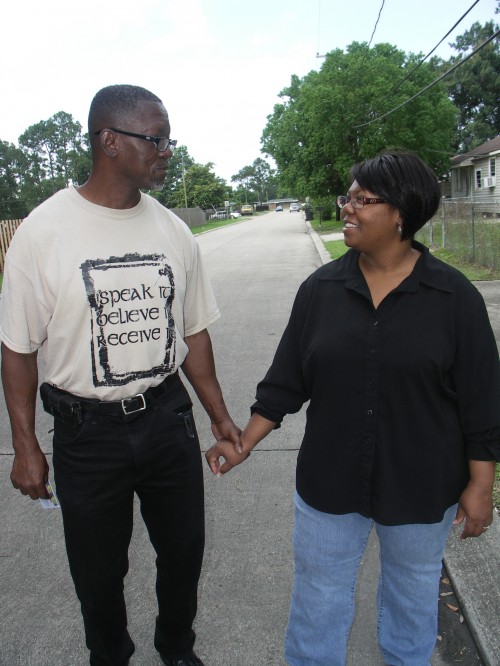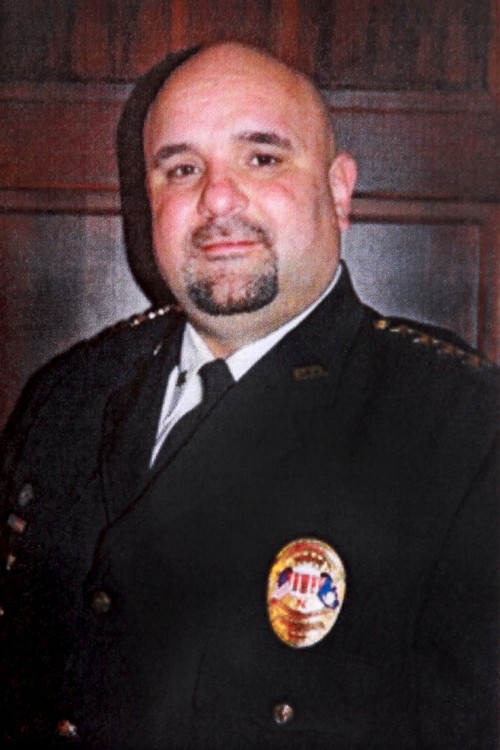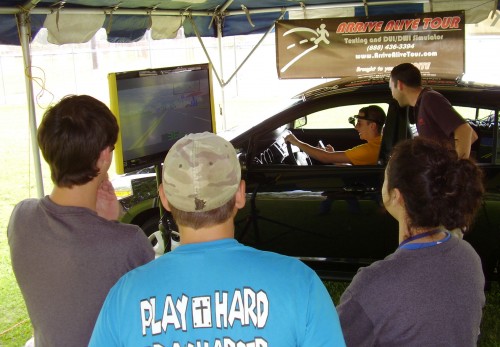
Mechanicville man looking to do the right thing
May 23, 2012
Magazine taps NSU police chief as top director
May 23, 2012Seniors from seven St. Mary Parish high schools recently got a virtual crash course in how dangerous drinking and driving and texting and driving can be through UNITE’s Arrive Alive driving simulator.
“We are taking a proactive approach to educate the youth of the parish and show our commitment to our youth,” said St. Mary Parish Sheriff Mark Hebert, whose department hosted the event at Franklin Senior High School. “Our goal is to bring awareness to driving under the influence.”
The Arrive Alive tour uses impact videos and a high tech simulator inside a real car to allow students to have a first hand experience, in a controlled environment, with the potential consequences of distracted or drunken driving.
“This is great opportunity for students to learn the effects of drinking and driving and texting and driving, much better than a computer presentation and slides,” the sheriff said. “This is the closest to reality of impaired driving.”
According to Hebert, texting while driving is an issue in St. Mary Parish.
“With all the social media activities of both kids and adults, many feel like they have to answer that call, read that text. It’s a lack of self-discipline,” he said. “You are driving a machine that can kill you and others. We want to bring to light, awareness, to these driving distractions. They can cause accidents if you don’t exercise discipline.”
Hebert expressed interest in having the tour visit the area on a regular basis.
“The simulator allows for extreme interaction with the students,” said Arrive Alive driving awareness inspector Storn Olson. “The car has sensors on the steering wheel, brakes and gas pedals, and the driver wears goggles that display a roadway with pedestrians, vehicles and buildings. What the driver is seeing is displayed on two screens so that other students can see what he or she sees while behind the wheel as well as the rear view mirror. There are also delays in the controls to mimic what a drunk driver would be seeing.”
The company is based in Cedar Rapids, Iowa, and has a total of four teams and eight instructors who travel the country putting on the demonstrations.
“We talked to about 200 students yesterday in Texas, and we do about 100 of these a year,” Olson said. “I’ve been doing this for four years and I’ve been to all 50 states except Alaska. We’ve been to Louisiana a lot this year, to cities like Jena and New Orleans, doing everything from small high schools to universities.”
According to Olson, the program’s focus is safety.
“The biggest cause of deaths in the 14 to 19 year-old age group is driving fatalities,” he said. “We always have a serious follow up message after the students drive the simulator. We want them to be safe and make it on to college and jobs.”
Before driving the simulator, Olson shows the students a video of the country’s first successful prosecution of a texting and driving a driving case. The accident occurred in Utah and resulted in a fatality.
“We want to teach them about the expenses associated with drinking and driving and texting and driving – court costs, fines, lawyer fees, increased auto insurance and community service hours,” he said. “We get good reception at schools, and 99 percent of students are pleasant. Just getting kids to try this out is important because it is the newest technology to educate on the effects of drinking and driving.”
St. Mary’s Hanson Memorial High School seniors were the first group to drive the simulator.
“Peers critique their driving skills as they watch the screens. There are always a few goofy ones in the crowd,” Olson said, laughing. “Students like that the car is real.”
Student Thomas Caprito volunteered to go through the texting and driving simulator, and he was given a real phone and required to respond to and answer a text message. While responding to the message, he ran a red-light and wrecked.
“The driving simulator was definitely an eye opening experience to the dangers of texting while driving,” Caprito said. “It will definitely make me think twice next time I hear my phone ring with a text while I’m driving.”
Olson then issued a example citation to Caprito for his driving offenses.
Students watched as their peers took turns driving and laughed at the way others drove. One student hit a pedestrian, resulting the screen looking like a cracked windshield, while another, who was on the drinking and driving simulator, stopped a long distance before a red-light.
“Cops would ticket you for that if they see you. We have few kids that make it through without messing up, usually the ones who play lots of driving video games, Olsen said, laughing. “It makes our job a lot easier when states have texting and driving laws in place.”
Hanson High student Erin Rodriguez also took a turn at driving the simulator.
“It was a very real simulation, even though I managed not to hit anything,” she said. “I Kept waiting for something to jump out in front of me. It was hard to drive because the steering wheel was vibrating.”
Olson stressed another of the tour’s goals: preventing fatalities.
“Most people at our events have been affected one way or another by drinking and driving and texting and driving — a friend or family member who has gotten a ticket, wrecked, caused a fatality or been the fatality,” he said. “We want to help prevent that from happening to students.”









